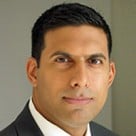Will the Federal Open Market Committee raise the Federal Reserve's target rate when it convenes in September—or will it delay until the year's closing sessions in October and December? With unambiguous forward guidance, the answer to the question would be well understood. As it stands, the Fed has little incentive to make commitments that would impinge upon its flexibility in setting timetables. The imagined abstruseness of Fed officials' statements has given rise to entire industry of contextualizes and soothsayers.
After a protracted period of inertia by the central bank, the data upon which the Fed is ultimately dependent are weighing in favor of a move. I would argue this has been the case for some time. In the early stages of the recovery, prevailing monetary policy was an appropriate response to crisis conditions and their immediate aftermath. Those crisis conditions no longer exist. As a result, low yields on the risk-free investment have coincided increasingly with an appetite for risk, with the effect of pushing asset prices higher.
While the broad characterizations of the economy and jobs are inconsistent with the current degree of monetary stimulus, markets remain at odds as to the Fed's next move. Based on the CME's 30-day Fed Funds futures market activity as of last Friday, investors put the chances of a one-step rate hike in September at 45 percent. There is a 55 percent chance that rates will remain unchanged. How much longer will the Fed hold out? The probabilty that rates will be unchanged through the end of the year stands at 28 percent.
If the FOMC does forgo the opportunity to raise its target rate in September, one of the key reasons will be continued slack in the labor market. The unusual weakness in American workers' earnings is a telltale sign that something remains amiss. During the Great Recession, rollercoaster year-over-year increases in weekly earnings averaged 2.3 percent. Six years on, there has been no observable improvement in this summary metric. The gain in year-over-year earnings thus far into 2015: also 2.3 percent.

© Touchpoint Markets, All Rights Reserved. Request academic re-use from www.copyright.com. All other uses, submit a request to [email protected]. For more inforrmation visit Asset & Logo Licensing.







